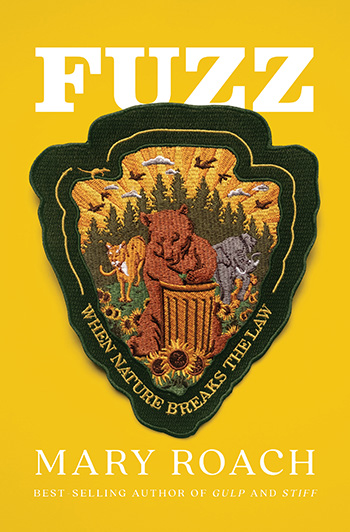

Excerpts
Synopsis | Reviews | Table of Contents
A Quick Word of Introduction
On June 26, 1659, a representative from five towns in a province of northern Italy initiated legal proceedings against caterpillars. The local specimens, went the complaint, were trespassing and pilfering from people’s gardens and orchards. A summons was issued and five copies made and nailed to trees in forests adjacent to each town. The caterpillars were ordered to appear in court on the twenty-eighth of June, at a specified hour, where they would be assigned legal representation.
Of course no caterpillars appeared at the appointed time, but the case went forward anyway. In a surviving document, the court recognizes the rights of caterpillars to live freely and happily, provided this does not “impair the happiness of man . . .” The judge decreed that the caterpillars be assigned a plot of alternate land for their sustenance and enjoyment. By the time the details were worked out, the defendants, having pupated, were surely through with their devastations, and all parties no doubt left the proceedings satisfied.
The case is detailed in an unusual 1906 book, The Criminal Prosecution and Capital Punishment of Animals. When I first paged through it, I wondered if it might be an ambitious hoax. Here were bears formally excommunicated from the Church. Slugs given three warnings to stop nettling farmers, under penalty of “smiting.” But the author, a respected historian and linguist, quickly wore me down with a depth of detail gleaned from original documents, nineteen of which are reproduced in their original languages in a series of appendices. We have the itemized expense report of a French bailiff, submitted in 1403 following the murder trial of a pig (“cost of keeping her in jail, six sols parisis”). We have writs of ejectment issued to rats and thrust into their burrows. From a 1545 complaint brought by vintners against a species of greenish weevil, we have not only the names of the lawyers but early examples of that time-honored legal tactic, the stall. As far as I could tell, the proceedings dragged on eight or nine months—in any case, longer than the life span of a weevil.
I present all this not as evidence of the silliness of bygone legal systems but as evidence of the intractable nature of human-wildlife conflict—as it is known today by those who grapple with it professionally. The question has defied satisfactory resolution for centuries: What is the proper course when nature breaks laws intended for people?
The actions of the magistrates and prelates made no rational sense, of course, for rats and weevils cannot understand property law or be expected to conform to the moral principles of human civilizations. The aim was to cow and impress the populace: look here, even nature must bend to our rule! And it was, in its way, impressive. The sixteenth-century judge who granted leniency to moles with young offspring made a show not only of his authority but of his temperance and compassion.
Wandering through the Middle Ages and the centuries just beyond, I began to wonder what the modern epoch had brought to bear on these matters. Having sampled the esoteric solutions of law and religion, I set out to see what science has been bringing to the table, and what answers it might offer for the future. So began more wandering. My guides were people with titles unfamiliar to me: Human-Elephant Conflict Specialist, Bear Manager, Danger-Tree Faller-Blaster. I spent time with predator attack specialists and attack forensics investigators, builders of laser scarecrows and testers of kinder poisons. I traveled to some of the “hot spots”—back alleys in Aspen, Colorado; leopard-terrorized hamlets in the Indian Himalaya; St. Peter’s Square the night before the pope’s Easter Mass. I considered the contributions of bygone professionals—the economic ornithologists and the rat searchers—as well as the stewards of the future, the conservation geneticists. I taste-tested rat bait. I was mugged by a macaque.
The book is far from comprehensive. Two thousand species in two hundred countries regularly commit acts that put them at odds with humans. Each conflict needs a resolution unique to the setting, the species, the stakes, the stakeholders. What you have here is the highlights of a two-year exploration, a journey through a world I had not known existed.
The first half of the book considers the felony crimes. Murder and manslaughter, serial killing, aggravated assault. Robbery and home invasion. Body snatching. Grand theft, sunflower seed. The perpetrators include the usual suspects, the bears and the big cats, and some less usual—monkeys, blackbirds, Douglas firs. The later pages explore acts less grievous but more widespread. We consider the jaywalking ungulates. The vultures and gulls that vandalize property for no discernible reason. The littering geese and the trespassing rodents.
Of course, these are not literal criminal acts. Animals don’t follow laws, they follow instincts. Almost without exception, the wildlife in these pages are simply animals doing what animals do: feeding, shitting, setting up a home, defending themselves or their young. They just happen to be doing these things to, or on, a human, or that human’s home or crops. Nonetheless the conflicts exist, creating dilemmas for people and municipalities, hardships for wildlife, and material for someone else’s unusual book.